Micronation
A micronation is a political entity whose members claim that they belong to an independent nation or sovereign state lacking legal recognition by world governments or major international organizations.[1] Most are geographically very small, but range in size from a single square foot to millions of square miles (Westarctica). They are usually the outgrowth of a single individual.
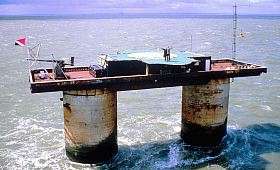
A micronation expresses a formal and persistent if unrecognized claim of sovereignty over some physical territory. Micronations are distinct from true secessionist movements; micronations' activities are almost always trivial enough to be ignored rather than challenged by the established nations whose territory they claim. Several micronations have issued coins, flags, postage stamps, passports, medals and other state-related items, often as a source of revenue.
Some of what might now be considered micronations began in the 20th century. The advent of the Internet provided the means for people to create many new micronations, whose members are scattered all over the world and interact mostly by electronic means, often calling their nations "nomadic countries". The differences between such "Internet micronations", other kinds of social networking groups and role-playing games are often difficult to define.[2]
The term "micronation" to describe those entities dates at least to the 1970s.[3] The term micropatriology is sometimes used to describe the study of both micronations and microstates by micronationalists, some of whom refer to sovereign nation-states as "macronations".
Micronations contrast with microstates, which are small but recognized sovereign states such as Andorra, Liechtenstein, Luxembourg, Monaco, San Marino and Vatican City.[4] They are also distinct from imaginary countries and from other kinds of social groups (such as eco-villages, campuses, tribes, clans, sects and residential community associations).
Definition
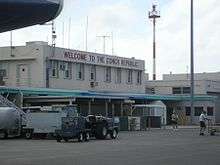
Micronations generally have a number of common features, although these may vary widely. They may have a structure similar to established sovereign states, including territorial claims, government institutions, official symbols and citizens, albeit on a much smaller scale. Micronations are often quite small, in both their claimed territory and claimed populations—although there are some exceptions to this rule, with different micronations having different methods of citizenship. Micronations may also issue formal instruments such as postage stamps, coins, banknotes and passports, and bestow honours and titles of nobility.
The Montevideo Convention was one attempt to create a legal definition distinguishing between states and non-states. Some micronations meet this definition, while some do not, and others reject the convention. Some micronations like Sealand or Hutt River reject the term micronation and consider themselves as sovereign states; other micronations like Flandrensis or Molossia have no intention to be recognized as real states.[5]
List of micronations
There are many different types of micronations that have been claimed over the years. A list of the notable micronations is located at List of micronations.
Micronations
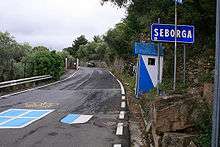
- Operation Atlantis, an early 1970s New York–based libertarian group, built a concrete-hulled ship called Freedom, which they sailed to the Caribbean, intending to permanently anchor it as their "territory". The ship sank in a hurricane and the project was then abandoned.

- Republic of Minerva, another libertarian project that succeeded in building a small man-made island on the Minerva Reefs south of Fiji in 1972 before being invaded by troops from Tonga, who annexed it before destroying the island.[6]:14
- Principality of Freedonia, a libertarian project that supported the Awdal Road Company's attempts to lease land from the Sultan of Awdal in Somaliland in 2001. If the Awdal Road Company is able to build a road, then the Sultan of Awdal will give land to allow the ARC to create an economic free zone, and some of that territory will then be handed over to the Principality of Freedonia. After the men from Awdal Roads Company were deported following false allegations about the lease, resulting public dissatisfaction led to rioting, and the reported death of a Somali.[6]:56–60
- Republic of Rose Island, an artificial island constructed in 1968 by Italian architect Giorgio Rosa in the Adriatic Sea. The structure was built as a tourist attraction, but soon after it was finished, Rosa declared sovereignty.[6]:14 The Italian navy dynamited the structure the following year.[7]
- Global Country of World Peace, "a country without borders for peace-loving people everywhere", was declared by Maharishi Mahesh Yogi in 2000. It made several attempts to buy or lease land for a sovereign territory.[8] It is now governed by Maharaja Tony Nader.[9] Its currency is the Raam and its capitals include Maharishi Vedic City, Iowa and Vlodrop.
- Asgardia, founded on October 12, 2016 by Igor Ashurbeyli, is a proposed nation based in outer space. Plans are for the country to be pacifist, have no official language, to hold a competition to design its flag, insignia and national anthem, and to become part of the United Nations. As of 25 March 2017 over 169,327 people[10] have signed up and become officially recognised members of the country.[11]
- The Free Republic of Liberland, founded in 2015, claims a small parcel of land between Croatia and Serbia called Siga. It shares a land border with Croatia and has its eastern border on the Danube. Because of the Croatia-Serbia border dispute some land is claimed by both countries and other parcels are claimed by neither.[12] It has established formal relations with Somaliland.[13]
Micronations based on historical claims
A small number of micronations are founded based on historical anomalies or on legal anomalies (deriving from disputed interpretations of law). These types of micronations are usually located on small (usually disputed) territorial enclaves, generate limited economic activity founded on tourism and philatelic and numismatic sales, and are tolerated or ignored by the nations from which they claim to have seceded. This category includes:
- Principality of Seborga, a town in the region of Liguria, Italy (near the southern end of the border with France and encompassing the town of Seborga), which traces its history back to the Middle Ages.[6]
- The Principality of Hutt River (formerly "Hutt River Province"), a farm in Western Australia, claimed to have seceded from Australia to become an independent principality, with a worldwide population numbered in the tens of thousands.[6]:22–27
- The Principality of Sealand, a World War II-era anti-aircraft platform built in the North Sea beyond Britain's then territorial limit, seized by a pirate radio group in 1967 as a base for their operations, and now used as the site of a secure web-hosting facility. Sealand has continued to promote its independence by issuing stamps and money, and appointing an official national athlete. It has been described as the "world's most notorious micronation" as well as the "world's smallest and weirdest country".[6]:8–31[14]
- The Crown Dependency of Forvik is an island in Shetland, currently recognized as part of the UK. Stuart Hill claims that independence comes from an arrangement struck in 1468 between King Christian I of Denmark/Norway and Scotland's James III, whereby Christian pawned the Shetland Islands to James in order to raise money for his daughter's dowry. Hill claims that the dowry was never paid and therefore it is not part of the UK and should be a crown dependency like the Isle of Man. Hill has also encouraged the rest of Shetland to declare independence.[15]
- The Imperial Throne, formerly the Russian Empire, is a micronation created in 2011 by Russian businessman and politician Prince Anton Bakov, chairman of the Monarchist Party of the Russian Federation. In 2014, the Imperial Throne proclaimed that Prince Karl Emich of Leiningen, one of several claimants to the royal Romanov line, was now Nicholas III, Emperor of All Russia. The Imperial Throne claims to be in contact with the governments of Montenegro and North Macedonia about a grant of territory and state recognition.
History
Early history and evolution
Martin Coles Harman, owner of the British island of Lundy in the early decades of the 20th century, declared himself King and issued private coinage and postage stamps for local use. Although the island was ruled as a virtual fiefdom, its owner never claimed to be independent of the United Kingdom, so Lundy can at best be described as a precursor to later territorial micronations. Another example is the Principality of Outer Baldonia, a 16-acre (65,000 m2) rocky island off the coast of Nova Scotia, founded by Russell Arundel, chairman of the Pepsi Cola Company (later: PepsiCo), in 1945 and comprising a population of 69 fishermen.
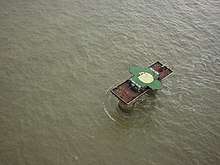
History during 1960 to 1980
The 1960s and 1970s witnessed the foundation of a number of territorial micronations. The first of these, Sealand, was established in 1967 on an abandoned World War II gun platform in the North Sea just off the East Anglian coast of England, and still survives. Others were founded on libertarian principles and involved schemes to construct artificial islands, but only three are known to have had even limited success in realizing that goal.
The Republic of Rose Island was a 400 m2 (4,300 sq ft) platform built in 1968 in Italian national waters in the Adriatic Sea,7 miles (11 km) off the Italian town of Rimini. It is known to have issued stamps, and to have declared Esperanto to be its official language. Shortly after completion, however, it was seized and destroyed by the Italian Navy for failing to pay state taxes.[7]
In the late 1960s, Leicester Hemingway, brother of author Ernest, was involved in another such project—a small timber platform in international waters off the west coast of Jamaica. This territory, consisting of an 8-foot (2.4 m) by 30-foot (9.1 m) barge, he called "New Atlantis". Hemingway was an honorary citizen and President; however, the structure was damaged by storms and finally pillaged by Mexican fishermen. In 1973, Hemingway was reported to have moved on from New Atlantis to promoting a 1,000 sq yd (840 m2) platform near the Bahamas. The new country was called "Tierra del Mar" (Land of the Sea). (Ernest Hemingway's adopted hometown of Key West was later itself part of another micronation; see Conch Republic.)
The Republic of Minerva was set up in 1972 as a libertarian new-country project by Nevada businessman Michael Oliver.[16] Oliver's group conducted dredging operations at the Minerva Reefs, a shoal located in the Pacific Ocean south of Fiji. They succeeded in creating a small artificial island, but their efforts at securing international recognition met with little success, and near-neighbour Tonga sent a military force to the area and annexed it.
On April 1, 1977, bibliophile Richard Booth declared the Welsh town of Hay-on-Wye an independent kingdom with himself as its monarch. The town subsequently developed a healthy tourism industry based on literary interests, and "King Richard" (whose sceptre was a recycled toilet plunger) awarded Hay-on-Wye peerages and honours to anyone prepared to pay for them.[17]
Japanese micronations in the 1980s
In 1981, drawing on a news report about Leicester Hemingway's "New Atlantis", novelist Hisashi Inoue wrote a 700-page work of magic realism, Kirikirijin, about a village that secedes from Japan and proclaims its bumpkinish, marginalized dialect its national language, and its subsequent war of independence. This single-handedly inspired a large number of Japanese villages, mostly in the northern regions, to "declare independence", generally as a move to raise awareness of their unique culture and crafts for urban Japanese who saw village life as backwards and uncultured. These micronations even held "international summits" from 1983 to 1985, and some of them formed confederations. Throughout the 1980s there was a "micronation boom" in Japan that brought many urban tourists to these wayward villages. But the harsh economic impact of the Japanese asset price bubble in 1991 ended the boom. Many of the villages were forced to merge with larger cities, and the micronations and confederations were generally dissolved.[18]
Australian and New Zealand developments
Micronational developments that occurred in New Zealand and Australia in the final three decades of the 20th century included:
- The Principality of Hutt River was founded in 1970, when Leonard Casley declared his property independent after a dispute over wheat quotas.[19][6]:22–27
- In 1976 the Province of Bumbunga was created on a rural property near Snowtown, South Australia, by an eccentric British monarchist.[20]
- The Sovereign State of Aeterna Lucina was created in a hamlet on the New South Wales north coast in 1978.[21]
- In Victoria, a long-running dispute over flood damage to farm properties led to the creation of the Independent State of Rainbow Creek in 1979.[6]:145
- An anti-taxation campaigner founded the Grand Duchy of Avram in western Tasmania in the 1980s; "His Grace the Duke of Avram" was later elected to the Tasmanian Parliament.[6]:144
- The Independent State of Aramoana was established in New Zealand in 1980.[22]
- The Empire of Atlantium was established in Sydney, in 1981 as a non-territorial global government.[6]:74–77
- The Republic of Whangamomona was established in 1989.[6]:34–37
- A mortgage foreclosure dispute led George and Stephanie Muirhead of Rockhampton, Queensland, to briefly and abortively secede as the Principality of Marlborough in 1993.[23]
Effects of the Internet
Micronationalism shed much of its traditionally eccentric anti-establishment mantle and took on a distinctly hobbyist perspective in the mid-1990s, when the emerging popularity of the Internet made it possible to create and promote statelike entities in an entirely electronic medium with relative ease. An early example is the Kingdom of Talossa, a micronation created in 1979 by then-14-year-old Robert Ben Madison, which went online in November 1995, and was reported in The New York Times and other print media in 2000.[24] As a result, the number of exclusively online, fantasy or simulation-based micronations expanded dramatically. The micronation Ladonia coexists as both a physical territory and as a large and active online community that resembles a third place, distinguishing itself from other micronations, which are either active online communities or claim small physical territories.[25]
A number of traditional territorial micronations, including the Hutt River Province, Seborga, and Sealand, maintain websites that serve largely to promote their claims and sell merchandise.
Academic, literary, and media attention
There has been a small but growing amount of attention paid to the micronation phenomenon in recent years. Most interest in academic circles has been concerned with studying the apparently anomalous legal situations affecting such entities as Sealand and the Hutt River Province, in exploring how some micronations represent grassroots political ideas, and in the creation of role-playing entities for instructional purposes.
In 2000, Professor Fabrice O'Driscoll, of the Aix-Marseille University, published a book about micronations: Ils ne siègent pas à l'ONU (They are not in the United Nations), with more than 300 pages dedicated to the subject.[26]
In May 2000, an article in The New York Times titled "Utopian Rulers, and Spoofs, Stake Out Territory Online" brought the phenomenon to a wider audience.[24] Similar articles were published by newspapers such as the Italian La Repubblica, O Estado de S. Paulo in Brazil, and Portugal's Visão at around the same time.
E. Peterbus Unum , the 18th episode of the animated sitcom Family Guy involves protagonist Peter Griffin establishing his home and yard as the micronation of Petoria.
Several recent publications have dealt with the subject of particular historical micronations, including Republic of Indian Stream (University Press), by Dartmouth College geographer Daniel Doan, The Land that Never Was, about Gregor MacGregor and the Principality of Poyais, by David Sinclair (Review, 2003, ISBN 0-7553-1080-2) and An Australian Monarch about the Principality of Hutt River by William Pitt (CopyRight Publishing, ISBN 978-1-876344-67-2).
In August 2003, a summit of micronations took place in Helsinki at Finlandia Hall, the site of the Conference for Security and Co-operation in Europe (CSCE). The summit was attended by delegations of the Principality of Sealand, the Kingdoms of Elgaland-Vargaland, NSK-State in Time, Ladonia, the Transnational Republic, the State of Sabotage and by scholars from various academic institutions.[27]
From 7 November through 17 December 2004, the Reg Vardy Gallery at the University of Sunderland (UK) hosted an exhibition on the subject of micronational group identity and symbolism. The exhibition focused on numismatic, philatelic and vexillological artifacts, as well as other symbols and instruments created and used by a number of micronations from the 1950s through to the present day. A summit of micronations conducted as part of this exhibition was attended by representatives of Sealand, Elgaland-Vargaland, New Utopia, Atlantium, Frestonia and Fusa.[28] The exhibition was reprised at the Andrew Kreps Gallery in New York City from 24 June – 29 July of the following year and organized by R. Blackson and Peter Coffin. Peter Coffin organized a more extensive exhibition about micronations at Paris' Palais de Tokyo in early 2007 called ÉTATS (faites-le vous-même)/States (Do it yourself).
The Sunderland summit was later featured in the 5-part BBC light entertainment television series How to Start Your Own Country presented by Danny Wallace. The series told the story of Wallace's experience of founding a micronation, Lovely, located in his London flat. It screened in the UK in 2005.[6]:28
Similar programs have also aired on television networks in other parts of Europe. In France, several Canal+ programs have centered on the satirical Presipality of Groland, while in Belgium a series by Rob Vanoudenhoven and broadcast on the Flemish commercial network VTM in April 2006 was reminiscent of Wallace's series, and centred on the producer's creation of Robland. Among other things Vanoudenhoven minted his own coins denominated in "Robbies".
In 2006 the travel guide company Lonely Planet published a light-hearted guide micronations named Micronations: The Lonely Planet Guide to Home-Made Nations.[6]
The Democratic Empire of Sunda, which claims to be the Government of the Kingdom of Sunda (an ancient kingdom, in present-day Indonesia) in exile in Switzerland, made media headlines when two so-called princesses, Lamia Roro Wiranatadikusumah Siliwangi Al Misri, 21, and Fathia Reza Wiranatadikusumah Siliwangi Al Misiri, 23, were detained by Malaysian authorities at the border with Brunei, on 13 July 2007, and are charged for entering the country without a valid pass. The hearing continues.[29]
In 2010, a conference of micronations was held on Dangar Island in Sydney, Australia. Micronations with representatives in attendance included the Empire of Atlantium, the Principality of Hutt River, the Principality of Wy and the Gay and Lesbian Kingdom of the Coral Sea Islands.[30]
In 2010, a documentary film by Jody Shapiro entitled How to Start Your Own Country was screened as part of the Toronto International Film Festival. The documentary explored various micronations around the world, and included an analysis of the concept of statehood and citizenship. Erwin Strauss, author of the eponymous book, was interviewed as part of the film.[31]
In 2012, a conference of micronations (PoliNation 2012) was held in London. Micronations with representatives in attendance included the Empire of Atlantium, the Republic of Molossia, the Grand Duchy of Flandrensis, Ladonia, Neue Slowenische Kunst and Austenasia.[32][33][34][35][36] A second conference was organized in 2015 in the Free Republic of Alcatraz in Perugia[5][37][38][39][40] and coneventions and conferences were also organized in Aigues-Mortes (2016), Atlanta (2017) and Vincennes (2018).[41][42]
The manga and anime series Hetalia: Axis Powers, in which the main characters are the stereotyped personifications of the nations of the world, features several micronations as characters. As of 2011 micronations represented include Sealand, Seborga, Wy, Kugelmugel, Molossia, Hutt River, Ladonia, and the former micronation of Nikko Nikko.[43]
The Australian television comedy series Micro Nation is set on the fictional island micronation of Pullamawang, which remained independent from Australia because they "forgot to mail in their paperwork" at the Federation of Australia in 1901.[44]
Coins
 Kingdom of Ourania coin
Kingdom of Ourania coin- A Principality of Seborga coin
- 35 Dollars; Republic of Minerva coin
- 20 Dollars; Hutt River Province (Note that this image is of a Desert Storm coin issue)
- Lundy Island—1 Puffin coin
 10 ICU gold "Wirtland Crane"
10 ICU gold "Wirtland Crane"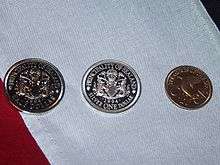 Sealandic coins, from left to right: Cupronickel Half Dollar, Silver One Dollar and Bronze Quarter Dollar
Sealandic coins, from left to right: Cupronickel Half Dollar, Silver One Dollar and Bronze Quarter Dollar The front and back of a challenge coin designed for distribution by the Prime Minister of Westarctica
The front and back of a challenge coin designed for distribution by the Prime Minister of Westarctica
See also
- Flags of micronations
- League for Small and Subject Nationalities
- List of micronation currencies
- List of micronations
- List of unrecognized countries
References
- Sawe, Benjamin. "What Is a Micronation?". World Atlas: World Facts. World Atlas. Retrieved 6 December 2017.
- Mateusz Kudła,"Jak zostać premierem nie odchodząc od komputera" (in Polish). onet.pl. Archived from the original on 2011-11-21. Retrieved 2013-04-27.
- The People's Almanac #2, page 330.
- Sack, John; Silverstein, Shel (1959). Report from practically nowhere. Harper.
- The Brussels Times, Springtime of micronations spearheaded by Belgian "Grand-Duke" Niels Archived 2016-01-13 at the Wayback Machine, 8 December 2015
- Sellars, John Ryan, George Dunford, Simon (2006). Micronations : [the Lonely Planet guide to home-made nations]. London: Lonely Planet Publications. pp. 28–33. ISBN 978-1-74104-730-1.
- "Riemerge l'isola dell'Utopia - Corriere della Sera". www.corriere.it (in Italian). Retrieved 2018-05-19.
- McGirk, Jan (2001-06-08). "Yogi's disciples want to create new utopia". The Independent. London (UK). p. 17. Archived from the original on 2013-05-17.
- MIZROCH, AMIR (2006-07-23). "Forget the F-16s, Israel needs more Yogic Flyers to beat Hizbullah. 30-strong TM group, sole guests at Nof Ginnosar Hotel, say they need another 235 colleagues to make the country safe". Jerusalem Post. p. 4. Archived from the original on July 13, 2011.
- "Archived copy". Asgardia. 19 January 2018. Archived from the original on 16 November 2016. Retrieved 24 November 2016.CS1 maint: archived copy as title (link)
- "Asgardia". Asgardia. 25 October 2016.
- "Balkans: Czech man claims to establish 'new state'". BBC News. 16 April 2015.
- "Somaliland says it wants closer cooperation with unrecognised Liberland". BBC News. 26 September 2017.
- "JOURNEYS—THE SPIRIT OF DISCOVERY: Simon Sellars braves wind and waves to visit the unlikely North Sea nation of Sealand". The Australian. Archived from the original on 2007-11-16. Retrieved 2007-11-10.
- Hill, Stuart (2008-06-21). "Forvik Declaration of Direct Dependence". The Crown Dependency of Forvik. Archived from the original on 2009-04-19. Retrieved 2009-05-04.
- "Book Review: Peak Oil: Apocalyptic Environmentalism and Libertarian Political Culture". Cultural Geographies. 24 (4): 650–651. 2017-03-06. doi:10.1177/1474474017695501. ISSN 1474-4740.
- "Mid Wales Arts—Richard Booth". BBC. Retrieved 2010-09-24.
- Shigeru Inoue, Nippon Matchidukuri Jiten, pp. 407–409, 2010, ISBN 4-621-08194-2
- Bicudo de Castro, Vicente; Kober, Ralph (2018-04-18). "The Principality Of Hutt River: A Territory Marooned in the Western Australian Outback". Shima: The International Journal of Research into Island Cultures. 12 (1). doi:10.21463/shima.12.1.13. ISSN 1834-6057.
- Cook, Craig (30 June 2018). "Bumbunga Governor Alec Brackstone's relentless will to secede". Sunday Mail.
- "'Isn't it every little boy's dream, to control everybody?'". The Daily Telegraph. 14 April 2017.
- "New New Zealand Island: The Kiwi pastime of micronations". NZ Herald. NZME Publishing. November 2018. Retrieved 3 February 2020.
- Milliken, Robert (10 June 1993). "Outback 'duke' takes on the bank: A Queensland man has defied Australia by creating a principality to escape his debts". The Independent. Archived from the original on 20 June 2017. Retrieved 20 June 2017.
- Mimh, Stephen (May 25, 2000). "Utopian Rulers, and Spoofs, Stake Out Territory Online". The New York Times.
- Bicudo de Castro, Vicente; Kober, Ralph (2019-04-15). "The Royal Republic of Ladonia: A Micronation built of Driftwood, Concrete and Bytes" (PDF). Shima: The International Journal of Research into Island Cultures. doi:10.21463/shima.13.1.10.
- ''Ils ne siègent pas à l'ONU''. Webcitation.org. Retrieved on 2012-07-15.
- Summit of micronations Archived 2014-11-14 at the Wayback Machine. Muu.fi. Retrieved on 2012-07-15.
- Nations come together in Sunderland. sunderland.ac.uk
- "Pizza Hut spends RM2 mln on advertising and promotion costs". The Borneo Post. 2010-05-06. Retrieved 2010-09-24.
- Nick Squires (2010-05-04). The world's micronations unite to demand recognition . Telegraph UK.
- Jody Shapiro (2010). How to Start your Own Country. tiff.net.
- (in Dutch) DAMIAANS, R., DILLEN, R., Uw krant op bezoek bij Europese micronaties Deel 1: Flandrensis, Het Belang van Limburg, 20 July 2012, page 20–21
- (in Dutch)DAMIAANS, R., DILLEN, R., Dwergstaten Deel 1: Flandrensis, Gazet van Antwerpen, 23 July 2012, page 8–9
- (in Dutch) VANSTEENKISTE, A., Hoogledenaar is Groothertog van micronatie Flandrensis, Het Nieuwsblad, 13 September 2012, page 22–22
- (in French) Delafontaine, L., Les Micronations, Montreuil-sur-Brêche, Diaphane, 14 September 2013, pages 160, ISBN 978-2-919077-19-9
- (in Dutch) GHEERAERT, T., Diplomatieke rel om een deel van Antarctica, Het Wekelijks Nieuws, 05 September 2013, page 10–11
- (in German) MOPO 24, H. von Dirk, Schräg! BRN will Mini-Königreiche nach Dresden holen Archived October 17, 2015, at the Wayback Machine, Dresden, 28 July 2015
- (in German) TAZ, J. Hanka, Treffen der Mikronationen in Italien, Dresden, 23 July 2015
- (in Italian) IL FATTO QUOTIDIANO, Micronazioni, conferenza ad Alcatraz (quella in Umbria) per costituire la "mini Onu, 04 July 2015
- (in English) THE TELEGRAPH, T. Coote, Inside the weird world of the micronation, 14 July 2015
- (in French) BONZOM, N., « Le sommet francophone des micronations, entre folkore et engagement citoyen », 20 minutes, 26 September 2016,
- (in French) PLACER, A., Sommet de micronations sur le pavé: folklorique et citoyen, La Voix du Nord, 21 January 2018
- Himaruya, Hidekaz (2010). "Chapter 2: A Treasure Chest Full of Countries!". Hetalia: Axis Powers, Volume 6. TokyoPop. pp. 31–48. ISBN 978-1-57032-152-8.
- "Micro Nation".
Further reading
- Anonymous (2003-07-24). "Prince finds if all else fails, secede". The Daily Telegraph. Sydney.
- Alex Blumberg (March 2000). "It's Good to Be King". Wired. Retrieved 2009-07-03.
- Adam Clanton, "The Men Who Would Be King: Forgotten Challenges to U.S. Sovereignty", UCLA Pacific Basin Law Journal, Vol. 26, No. 1, Fall 2008, pp. 1–50.
- Dapin, Mark (2005-02-12). "If at first you don't secede ...". The Sydney Morning Herald.
- Bruno Fuligni (1997). L'État C'est Moi: Histoire des monarchies privées, criptarchies [L'État C'est Moi: History of private monarchies and cryptarchies]. Max Chaleil.
- Kochta & Kalleinen, editors. Amorph! 03 Summit of Micronations–Documents/Asiakirjoja, 2003, ISBN 3-936919-45-3
- Menefee, Samuel Pyeatt. "'Republics of the Reefs': Nation-Building on the Continental Shelf and in the World's Oceans", California Western International Law Journal, vol. 25, no. 1, Fall 1994, pp. 81–111
- Peter Needham (2006-09-26). "Born to rule". The Australian.
- Nick Squires (2005-02-24). "Mini-states Down Under are sure they can secede". The Daily Telegraph.
- Strauss, Erwin S. How to start your own country, ISBN 0-915179-01-6
External links
| The Wikibook Making an Island has a page on the topic of: Declaring Independence |
| Wikimedia Commons has media related to Micronation. |